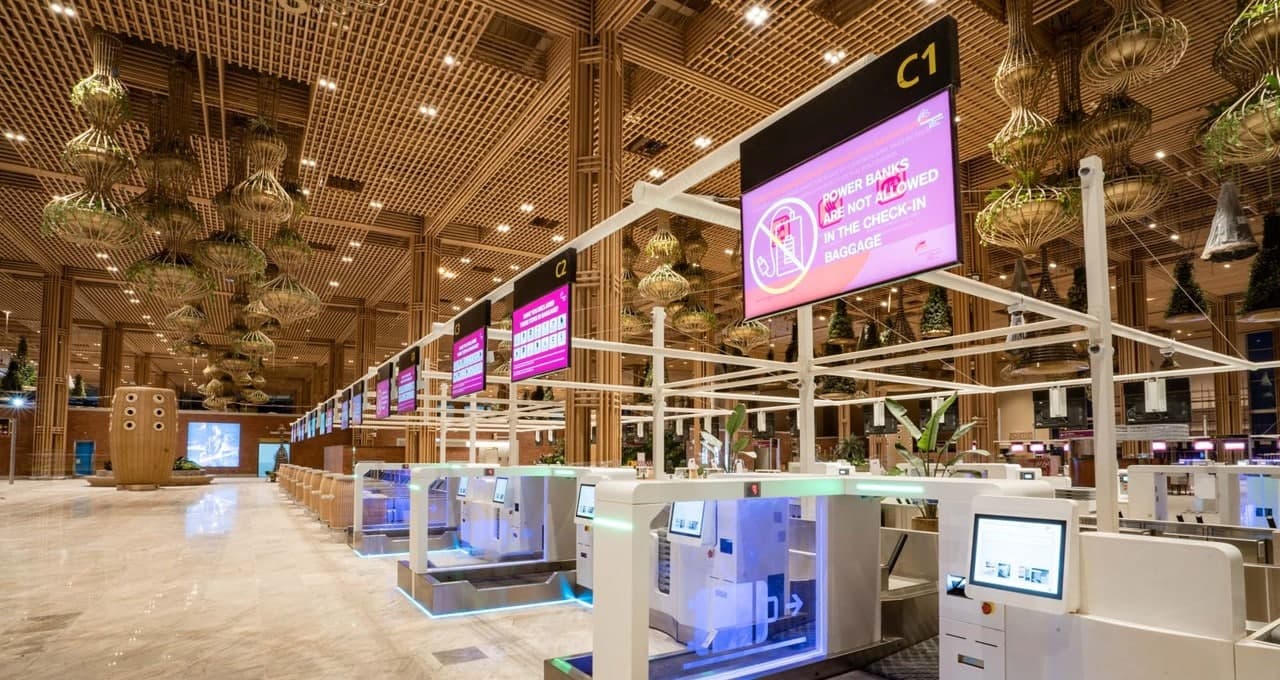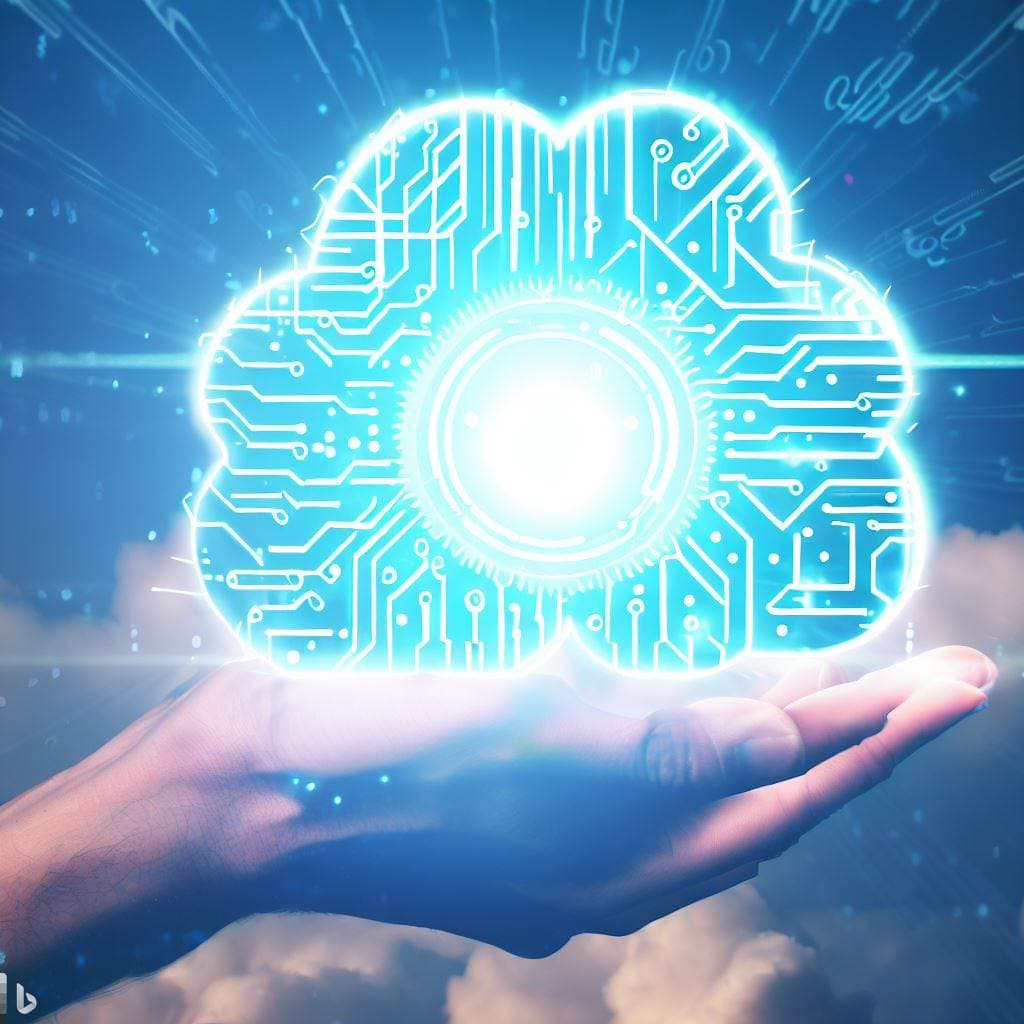Navigating the Future of Airports with AI: Bengaluru Leads the Way.
AI Lands at Bengaluru Airport With IoT Company’s Intelligent Video Analytics Platform
Bengaluru Airport, one of the world’s busiest airports with nearly 32 million travelers annually, has taken a significant leap in enhancing passenger experience and security. The airport has integrated vision AI technologies powered by Industry.AI, a member of the NVIDIA Metropolis vision AI partner ecosystem. This integration has been primarily focused on BLR’s newest terminal, T2, also known as the Garden Terminal, due to its lush green spaces, indoor gardens, and waterfalls. This initiative marks one of the first large-scale deployments of intelligent video analytics in an Indian airport.
The primary objective of this integration is to increase the safety and efficiency of terminal operations. The vision AI and object detection capabilities help in tracking abandoned baggage, identifying long passenger queues, and alerting security teams about potential issues. By pinpointing congestion points and predicting delays, the staff can redirect passengers to less crowded areas or open additional checkpoints, thereby reducing wait times and enhancing the overall passenger experience.
George Fanthome, the chief information officer at BLR’s parent company, expressed his enthusiasm about the project, stating that adopting such advanced deep learning technologies is a step towards making BLR one of the world’s best airports.
The Industry.AI platform, which powers this initiative, connects to over 500 live camera feeds across the BLR terminal. It can perform a multitude of tasks in real-time, such as detecting unattended luggage, managing passenger queues, and even tracking unauthorized individuals and vehicles in the airport. The platform also aids in managing transportation both inside and outside the airport.
The technology stack behind this initiative includes the NVIDIA TAO Toolkit and A100 Tensor Core GPUs for training AI models. For AI inference, Industry.AI utilizes the NVIDIA Triton Inference Server and A30 Tensor Core GPUs. With the support of NVIDIA’s DeepStream software development kit and the NVIDIA Inception program, Industry.AI was able to build and deploy the solution at BLR in just three months.
Tejpreet Chopra, CEO of Industry.AI, highlighted the benefits of the collaboration with NVIDIA and expressed plans to expand the deployment of NVIDIA-powered computing and vision AI technologies across other terminals at BLR and even other airports.
Learn more about the NVIDIA Metropolis platform and its applications in building smarter, safer airports by Author Angie Lee here.
Video analytics refers to the capability of automatically analyzing video content to detect and determine temporal and spatial events. Traditionally, video analysis was done manually by humans, which was time-consuming and prone to errors. With the advent of artificial intelligence (AI), video analytics has undergone a transformative shift. AI-powered algorithms, especially deep learning models, can process vast amounts of video data at incredible speeds, identifying patterns, objects, behaviors, and anomalies that would be impossible or highly impractical for humans to spot. These algorithms can be trained to recognize specific objects, track movements, and even predict behaviors based on historical data. From security surveillance and traffic management to customer behavior analysis in retail stores, AI-driven video analytics offers enhanced accuracy, efficiency, and actionable insights, revolutionizing the way we interpret and utilize video data.
Video analytics can benefit from a variety of machine learning algorithms, depending on the specific task at hand. Here are some commonly used algorithms and techniques for different video analytics tasks:
Convolutional Neural Networks (CNNs):
- Use Case: Object detection, scene recognition, and image classification in video frames.
- Example: YOLO (You Only Look Once), SSD (Single Shot MultiBox Detector), and Faster R-CNN for real-time object detection.
Recurrent Neural Networks (RNNs) and Long Short-Term Memory (LSTM):
- Use Case: Analyzing temporal sequences in videos, action recognition, and video captioning.
- Example: Using LSTM layers after feature extraction from CNNs to recognize actions over a sequence of frames.
3D Convolutional Neural Networks (3D-CNNs):
- Use Case: Spatiotemporal feature extraction, where both spatial and temporal dimensions are considered simultaneously.
- Example: C3D (3D Convolutional Networks) for action recognition.
Temporal Convolutional Networks (TCNs):
- Use Case: Capturing long-range dependencies in video sequences without the complexities of RNNs.
- Example: Using TCNs for gesture recognition in videos.
Two-Stream CNNs:
- Use Case: Action recognition by processing spatial and temporal streams separately.
- Example: Simonyan and Zisserman’s two-stream CNN that uses optical flow for the temporal stream.
Transformer-based Models:
- Use Case: Video understanding, action recognition, and video captioning.
- Example: Video Transformer Network (VTN) that captures long-range dependencies in videos.
Autoencoders:
- Use Case: Anomaly detection in surveillance videos.
- Example: Using convolutional autoencoders to reconstruct video frames and detect anomalies based on reconstruction errors.
Support Vector Machines (SVM):
- Use Case: Classification tasks after feature extraction from video frames.
- Example: Using HOG (Histogram of Oriented Gradients) features from video frames and classifying them using SVM.
Hidden Markov Models (HMMs):
- Use Case: Gesture recognition and activity analysis based on the probabilistic sequence of observed patterns.
Gated Recurrent Units (GRUs):
- Use Case: Similar to LSTMs, used for sequence modeling in videos, like action recognition and video summarization.
When selecting an algorithm for video analytics, it’s essential to consider the specific requirements of the task, the computational resources available, and the desired accuracy and speed of the model.
Further, the integration of AI at Bengaluru Airport has showcased the potential of technology to revolutionize airport operations and enhance passenger experience. Here’s how other airports worldwide might benefit from similar AI integrations:
Enhanced Security: AI can help in real-time monitoring of airport premises, detecting unattended baggage, and identifying suspicious activities. This can lead to quicker response times and more effective security measures.
Efficient Passenger Flow Management: AI can analyze passenger flow in real-time, identifying congestion points and predicting potential bottlenecks. This allows airport staff to proactively manage crowds, redirect passengers, and open additional checkpoints when needed.
Predictive Maintenance: AI can predict when equipment or infrastructure is likely to fail by analyzing data from sensors and cameras. This can lead to timely maintenance, reducing downtime and ensuring smooth airport operations.
Enhanced Customer Experience: AI can provide personalized experiences for passengers. For instance, AI-powered chatbots can assist with queries, and facial recognition systems can expedite check-in and boarding processes.
Resource Optimization: AI can optimize the allocation of resources, such as staff deployment, based on real-time data. This ensures that resources are used where they are most needed, leading to cost savings and increased efficiency.
Sustainable Operations: AI can monitor energy consumption patterns and optimize HVAC systems, lighting, and other energy-intensive operations to reduce the airport’s carbon footprint.
Lost and Found Assistance: AI-powered systems can help track lost items more efficiently, using image recognition to match lost items with their owners.
Health and Safety Monitoring: Especially relevant in the post-COVID era, AI can monitor compliance with health and safety regulations, such as mask-wearing and social distancing, ensuring a safer environment for passengers.
Noise and Air Quality Management: AI can monitor and analyze noise and air quality data, helping airports to implement measures to reduce noise pollution and improve air quality.
Data-Driven Decision Making: AI can provide insights from vast amounts of data, helping airport management make informed decisions about operations, infrastructure development, and customer service.
In conclusion, the integration of AI in airport operations has the potential to transform the aviation industry, making airports more efficient, secure, and passenger-friendly. As technology continues to evolve, it’s likely that more airports worldwide will adopt AI to meet the growing demands of the modern traveler.
Collaborations like the one between Industry.AI and NVIDIA, which led to rapid technological deployment, can serve as a blueprint for accelerating advancements in various sectors. Here’s how such partnerships can catalyze progress across different industries:
Leveraging Expertise: Each partner brings a unique set of skills and expertise to the table. By combining strengths, collaborations can address complex challenges more effectively than individual entities working in isolation.
Shared Resources: Partnerships often lead to pooled resources, be it financial, technological, or human capital. This allows for larger-scale projects, more extensive research, and faster implementation of solutions.
Risk Mitigation: Collaborative efforts distribute the risks associated with innovation. If a project faces challenges or fails, the impact is shared, making companies more willing to undertake ambitious initiatives.
Faster R&D: With more hands on deck and a diverse set of minds tackling a problem, research and development processes can be expedited. Different perspectives can lead to innovative solutions that a single entity might overlook.
Streamlined Implementation: Established collaborations often have clear workflows, communication channels, and decision-making processes, leading to efficient project execution.
Access to New Markets: Partnerships can open doors to new markets or customer bases that were previously inaccessible to individual companies.
Feedback and Iteration: Collaborative projects benefit from continuous feedback from multiple stakeholders. This iterative approach ensures that solutions are refined and optimized before full-scale deployment.
Cross-Industry Innovation: Partnerships between companies from different sectors can lead to cross-industry innovations. For instance, a collaboration between a tech company and a healthcare provider might result in groundbreaking medical technologies.
Economies of Scale: Joint ventures can lead to bulk purchasing, shared infrastructure, or combined technological platforms, resulting in cost savings and increased efficiency.
Knowledge Transfer: Collaborations facilitate the exchange of knowledge, skills, and best practices between partners. This transfer of knowledge can uplift all involved parties and lead to better outcomes.
Regulatory Navigation: In sectors with stringent regulations, partnerships can help companies navigate legal and compliance challenges more effectively by leveraging collective experience and resources.
Public-Private Partnerships: Collaborations between private companies and government entities can lead to projects that benefit the public, drive innovation, and are supported by favorable policies.
In essence, strategic partnerships, like the one between Industry.AI and NVIDIA, can be a driving force for technological advancements across sectors. By combining resources, expertise, and vision, collaborative efforts can lead to innovations that reshape industries and improve the quality of services and products for end-users.
The integration of AI in airports is just the tip of the iceberg when it comes to the potential innovations in the future of air travel. As technology continues to evolve and intertwine with the aviation industry, we can anticipate several groundbreaking changes:
Biometric Boarding: Facial recognition and other biometric systems will streamline the boarding process, eliminating the need for physical boarding passes. Passengers will be able to move through security and onto the plane with minimal friction.
Predictive Maintenance: AI-driven algorithms will predict when aircraft components are likely to fail, allowing for timely replacements or repairs. This will enhance safety and reduce unexpected delays.
Personalized In-Flight Entertainment: AI will curate entertainment options based on a passenger’s preferences and past choices, offering a more tailored in-flight experience.
Dynamic Pricing: AI algorithms will analyze various factors, including demand, seasonality, and global events, to adjust ticket prices in real-time, benefiting both airlines and passengers.
Voice-Activated Assistants: In-flight voice assistants will help passengers control their entertainment systems, adjust seating, or even order food and beverages.
Enhanced Luggage Tracking: AI-powered systems will provide real-time updates on luggage location and status, reducing the instances of lost baggage and giving passengers peace of mind.
Optimized Flight Paths: AI can analyze weather patterns, air traffic, and other variables to suggest the most efficient and safe flight paths, reducing fuel consumption and travel time.
Virtual Reality (VR) Experiences: VR could offer passengers immersive experiences, such as virtual tours of their destination or relaxation scenarios, enhancing in-flight entertainment.
Smart Cabins: AI-driven sensors could adjust lighting, temperature, and even seat firmness based on passenger preferences and the current stage of the flight.
Crowd Management: AI will analyze passenger flow and predict congestion points in real-time, allowing airport staff to manage crowds more effectively, especially during peak times.
Eco-Friendly Innovations: AI can optimize flight operations to reduce carbon emissions, and it can also aid in the research and development of more sustainable aviation fuels and eco-friendly aircraft designs.
Health Monitoring: Wearable devices or seat sensors could monitor passengers’ health metrics during a flight, alerting crew members if there are any concerns.
Seamless Multi-Modal Travel: AI can integrate flight data with other modes of transportation, such as trains or buses, ensuring passengers have a seamless travel experience from start to finish.
Chatbots and Virtual Assistants: These will provide instant responses to passenger queries, from baggage policies to flight status, improving customer service.
Augmented Reality (AR) Navigation: AR apps can guide passengers through airports, helping them find gates, lounges, or amenities with ease.
In conclusion, the future of air travel, powered by AI and other emerging technologies, promises to be more efficient, personalized, and enjoyable for passengers. As these innovations become mainstream, the entire travel experience, from booking to landing, will undergo a significant transformation.






Comments